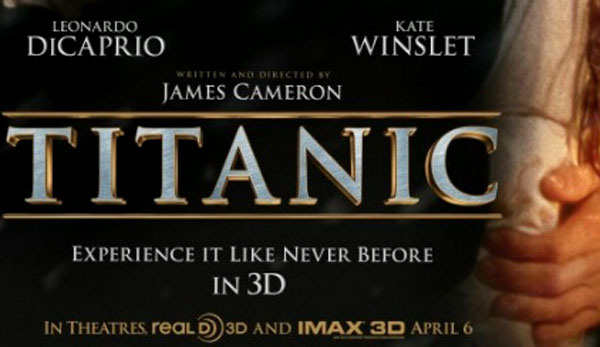
The year of 2012 has displayed several advancements in the movie making industry. These incredible strides have altered the relationship between the movie producers and the audience they aim to please.
Films such as The Avengers by Paramount Pictures in association with Marvel Studios, The Dark Knight Rises by Warner Brothers Pictures in conjunction with Syncopy Legendry Pictures and D.C. entertainment, and the first installment of The Hunger Games, produced by Larger than Life Production and Lion Gate Films, not only have brought people into theaters around the world but also have left a significant mark in box office history, grossing between approximately $672 million and $1 billion since their release.
As technology is constantly evolving, it seems that the film industry is aiming to display the improvements to viewers across the globe. A recent trend that has become noticeably more prominent in Hollywood is the re-release of an older film equipped with the latest technological advancements such improvements in sound, lighting, and special features. The most common addition is 3-D.
3-D, also known as three dimensional, is a technique that is used primarily to enhance the visual experience of the film.
In the past year, movies such as Disney’s 1991 animated film Beauty and the Beast, James Cameron’s Oscar winning Titanic, and Disney Pixar’s animated film Finding Nemo have all been re-released as 3-D films. These films are not the only ones; it has been announced that on Jan. 18 and Sept. 13 of the next year, Disney Pixar’s Monsters Inc. and The Little Mermaid will also be re-released as 3-D motion pictures.
While the movies seem to be doing very well in the box office, it is hard to determine the true motive behind the company’s decision to re-release the films.
This leaves one question unanswered: Are the movie-making companies re-releasing films as a ploy to make more money out of a story they know works or is the film being enhanced to show the potential of cinema in this day and age?
Usually, when a movie is re-released, there is no change to the actual story, characters, or overall theme of the piece. This can be interrupted as “uncreative” on the part of the production companies who would rather reproduce the same story than invent a new one. It also costs significantly less to make a film 3-D than it does to film a whole motion picture from scratch.
“They [the filmmakers] make it out to be a way to show everyone a movie in 3-D and allow for them to reminisce about the film, but in reality, it is probably just to make more money,” said freshman business major Kris Boyle.
However, part of the reason these stories succeed and continue to bring in a profit is because of the enjoyment factor of these films. These movies formed and created bonds with many people and it is the loyal fans who want to see it again and again.
The verdict is very indecisive, for the true reason could simply be the combination of both. Perhaps part of the reason is to display the undeniable progression of the film making industry, while conversely it could be a tool to make money as well.
“I think it could be a bit of both. While it’s a way to keep great family movies in circulation with a new twist, the companies would never just put them out with the sole intention of giving it out to the public at their own expense,” said sophomore psychology major Nayda Hall. “At the end of the day it’s still a business.

